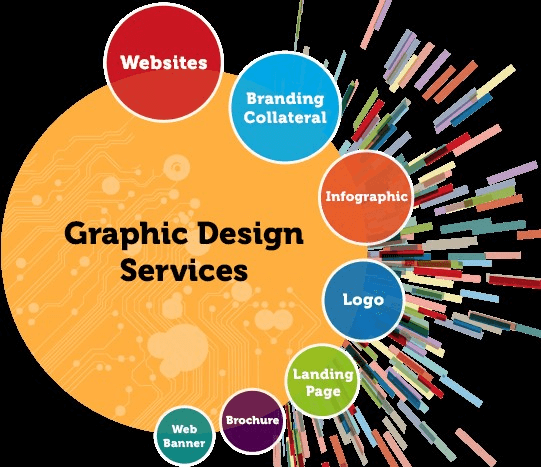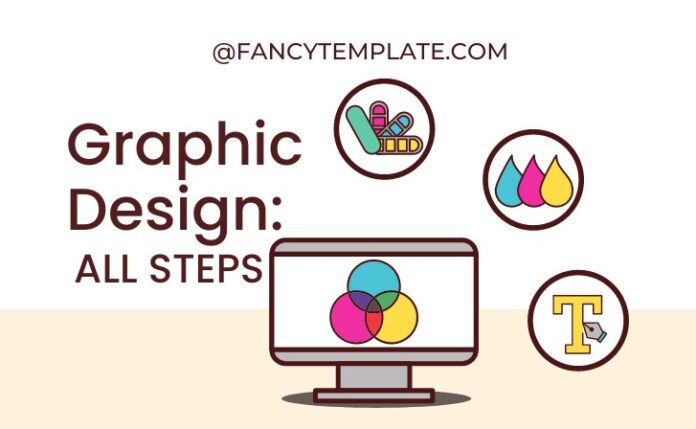What is Graphic Designing?
Graphic designing is the art of conveying emotions, information, facts as well as figures through the use of visual elements, images and typography. Graphics are a need of every industry as it is used to design creative and informative logos, posters, magazines, brochures, television advertisements etc. Designers can use a variety of software such as adobe photoshop, canva etc to create these designs but the process can also be a freehand.

Steps you need to follow as a beginner in graphic designing:
- Research
- Think out of the way
- Keep it simple!!
- Use color theory
- Stick to the graphic basics
- Visual hierarchy
- Practice the art
- Network with others
- Replicate favorite work for inspiration
- Seek constructive criticism
Now let’s understand each step of graphic designing in detail:
1. Research:
A thorough research of your subject is very important before going deep into your project. You must have a complete knowledge of what subject you are working upon, what your goals are and what idea you wish to pass on through your project. However a deep research and expertise allows you to gather information, gain knowledge and make informed decisions. It enables you to discover new ideas, uncover insights and stay updated to modern technology.
2. Think out of the box:
Once you are done with the research work, it is time to prepare a framework for your project. You need to be unique and think out of the way while preparing this framework to make your project stand out from others and reach a wider population. This helps you to be unique in each your project as well as from others.
3. Keep it simple!
As a beginner, you should be more focused on having your idea to reach to the wider audience rather than stuffing your project with complex themes and color gradients which makes it difficult to read and understand. After all a minimum amount of text, fonts and colors can be used to draw an eye-catching and easy to understand design.
4. Use color theory:
In graphic designing it is rightfully said that “less is more”. Having precise color combinations in your design makes it visually appealing to the eyes but always remember to keep it simple. There are several predefined color schemes that work well together. These color schemes includes complementary colors(contrasting colors in the color wheel), analogous colors(consecutive colors on the color wheel) and monochromatic colors(different shades of the same color). By applying color theory principles you can create visually appealing designs and impactful compositions. If you are interested to get full insight of color theory then you might find this article on Webflow.

5. Stick to the graphic basics:
A good graphic design project requires an accurate selection of font size, font type and typography. You have a number of stylish fonts available to you but you will often find experts using the same 2-3 classic fonts in their designs due to their readability. Fonts have to be chosen wisely as they can create or destroy the vibe of your work. The fonts used must have proper size and should be readable.
6. Visual hierarchy:
Visual hierarchy refers to organizing texts and elements in a way that represents a clear and logical flow of information. One simple example can be the text in your design: all the text used such as heading, sub heading and the information inside them must have a font size in a decreasing order so that it is easy for the viewer to read and understand.
7. Practice the art:
As the famous quotation rightfully says ‘Practicing with purpose is the key to progress’, continuous practice in the right direction is the only way to success while learning a new skill. Designers in their early stages need to practice new designs every now and then to get an understanding of the color schemes, fonts and visual hierarchy. Through practice, you build muscle memory, refine your skills, and get a boost in your confidence. It also helps you discover new ideas and push yourself beyond your comfort zone.
8. Network with others:
Networking is all about building a web of relationships and interconnections with people of your field that can open doors of opportunities as a graphic designer. Being in touch with your fellow designers as well as experts of the industry helps you learn about latest trends, modern designs and newer technologies. In addition it also boosts your confidence and improves your communication skills. When it comes to network building, LinkedIn is most helpful in terms of building networks with people of same interest.

9. Replicate favorite work for inspiration:
Copying other’s work in your designs is the worst you can do to yourself in your career. But replicating other’s work for practice and learning purpose is always recommended. It gives you a better understanding of the techniques used, analyze the details as well as gives you the opportunity to experiment and create your own designs. It is like a hands-on learning experience where you learn from experts and refine your skills as graphic designer.
10. Seek constructive criticism:
Always be open to constructive criticism as it helps you enhance your skills. When you actively seek criticism on your work, you open yourself to valuable insights and different perspectives which eventually is beneficial to you as a designer. Feedback can spark new and unique ideas which encourages you to think out of the box. While it is true that seeking constructive criticism requires an open mind and willingness to learn.
Conclusion:
Every design you create must have a proper research work and brainstorming in the background. Don’t just wake up one day and start randomly creating designs instead use proper color schemes, focus on typography, keep a check on the alignment scales and white spaces.
Always be open to other’s perspective of your work and be open to feedback. Learn from your’s as well as other’s mistakes and grow your career in graphic designing. If you want to explore more content about graphic design then click here.

